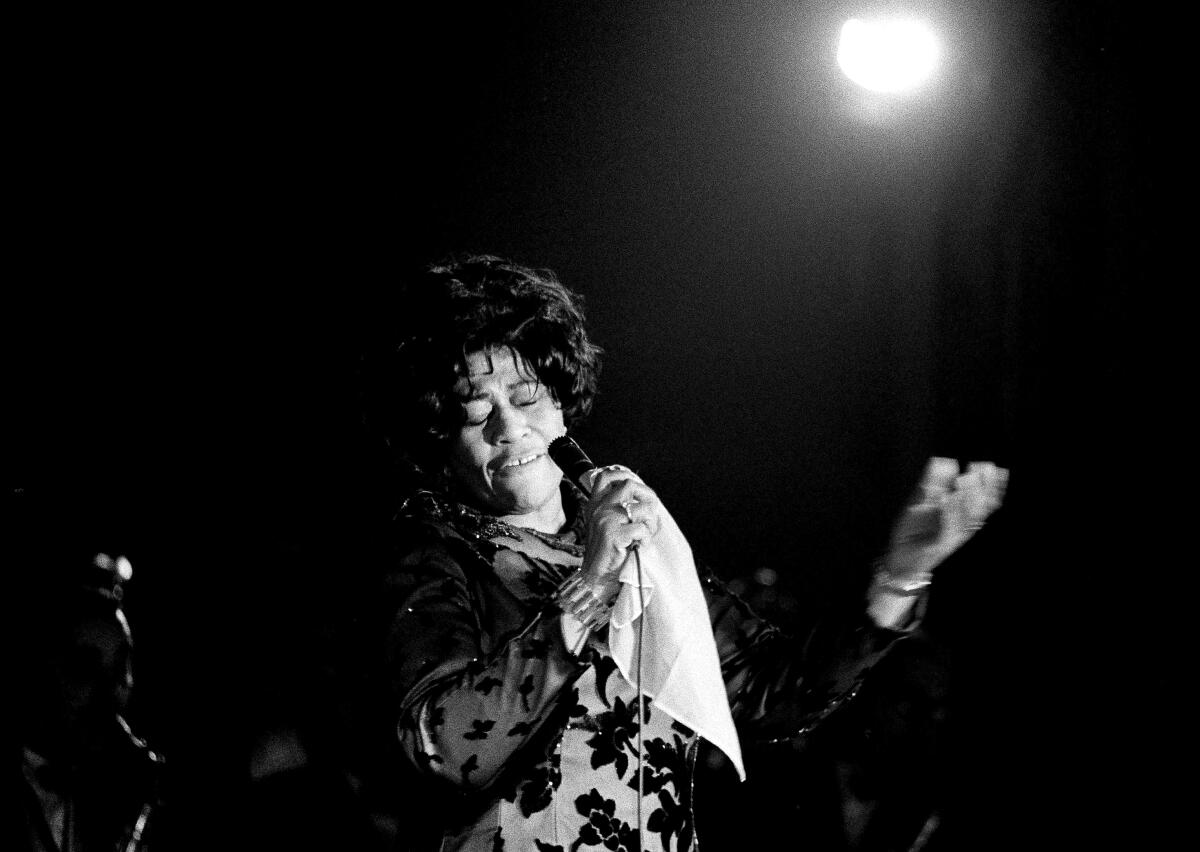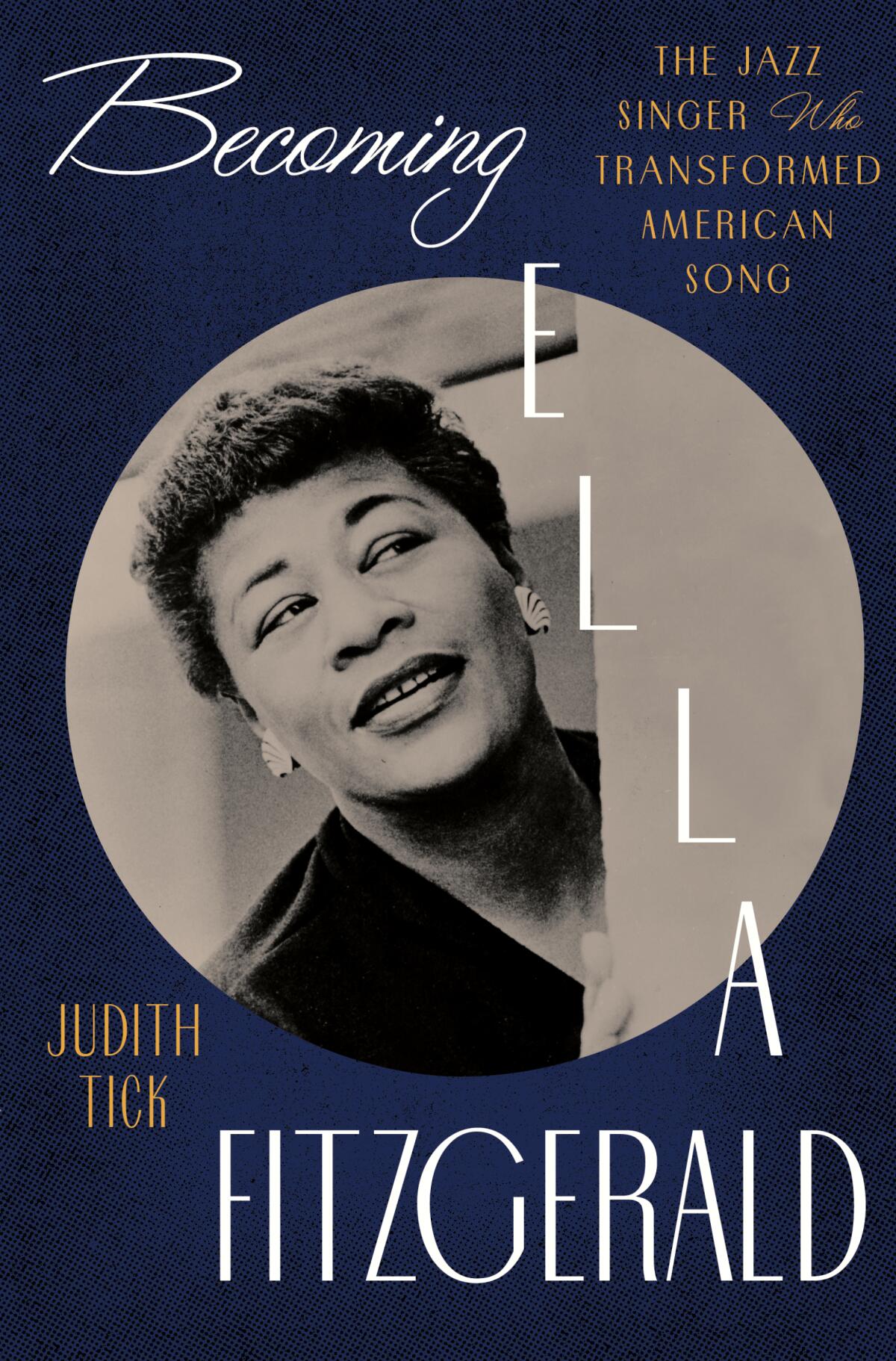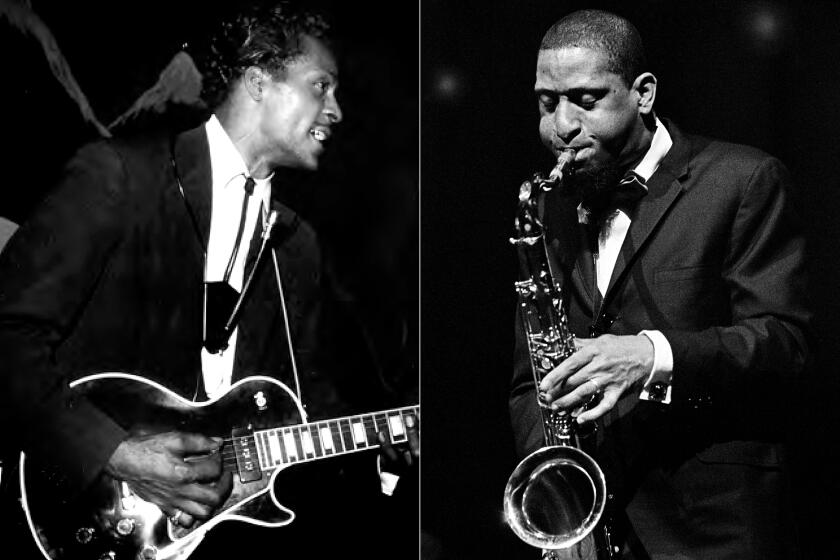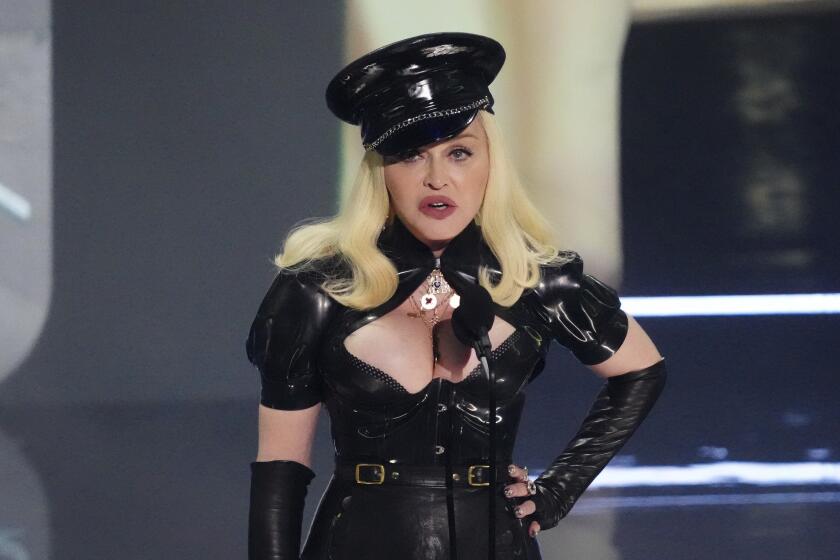Ella Fitzgerald never stopped moving. That’s how the jazz singer became an icon

- Share via
Review
Becoming Ella Fitzgerald: The Jazz Singer Who Transformed American Song
By Judith Tick
Norton: 592 pages, $40
If you buy books linked on our site, The Times may earn a commission from Bookshop.org, whose fees support independent bookstores.
The title of “Becoming Ella Fitzgerald,” Judith Tick’s incisive, doggedly researched new biography of the 20th century’s preeminent songstress, suggests action and movement. This is no accident. As Tick writes, “across her entire career, the artist was always ‘becoming Ella Fitzgerald.’”
Her reign began as a swing singer with the great bandleader and drummer Chick Webb; took on a bop tenor as she fell under the influence of Dizzy Gillespie; and blossomed into refined pop elegance with her remarkable run of songbook albums produced by Norman Granz. She could irk the jazz purists and confound the supper club set. But for more than 60 years, to paraphrase a male peer who weaves in and out of this narrative, she did it her way.
“Saxophone Colossus: The Life and Music of Sonny Rollins” and “Chuck Berry: An American Life” illuminate Black musicians and the legacy they left us.
Tick, a professor emerita of music history at Northwestern University, proves an ideal guide to Fitzgerald’s perpetual progress. She translates what she hears with lyrical clarity, describing the “honey-mustard blend” of Fitzgerald and Louis Armstrong’s voices on their classic duets. On her subject’s rendition of “Almost Like Being in Love,” Tick writes, “Fitzgerald purged sentimentality in an arrangement punctuated with brassy dissonance and bite. Her interpretation had subtle jazz phrasing, inflected melodic alterations, and inimitable swing.”

That last part, the swing, is a constant in these pages. It made her name with Webb, sustained her after his death from tuberculosis in 1939 and helped distinguish her timeless interpretations of Cole Porter; George and Ira Gershwin; and the other Great American Songbook architects she committed to vinyl in the ‘50s. She pushed the beat and molded it to her uncanny instincts, whether she was feverishly scatting to her signature reinvention of “Lady Be Good” or purring standards like “My Funny Valentine” and “Always True to You in My Fashion” — the last of which showcases her wit and easy grasp of Porter’s wicked double entendres.
With few survivors of Fitzgerald’s era left to interview, Tick makes vigorous use of press coverage, yielding particularly fruitful results from Black newspapers and periodicals that covered seemingly every move the singer made. Fitzgerald, who died in 1996, tended to let her guard down a little with reporters from the Baltimore Afro-American, the Pittsburgh Courier and other Black publications that thrived through much of the century.
This was where readers were most likely to learn of Fitzgerald’s dissatisfaction with her career or management — she often didn’t see eye to eye with Decca, the label for which she recorded most of her work until Granz stole her away with his new label, Verve, in 1956. The material Decca assigned her was rarely charting or artistically fulfilling. So she did what came naturally. She moved on to the next thing.
Mary Gabriel’s biography, ‘Madonna: A Rebel Life,’ tracks the story of an artist well-deserving of deep analysis — even if the early years are far more interesting.
Fitzgerald could be counted on to light up a stage, but she kept her personal life pretty quiet. She seldom did drugs, lived to the ripe old jazz age of 79. She married a collaborator, bassist Ray Brown, got divorced after six years and kept working with him through several more projects. She was socially aware, speaking out against racism and helping break the color barrier at posh venues like the Fairmont Hotel in San Francisco. But she saved most of her feather-ruffling for her artistic collaborations, including some knock-down, drag-out arguments with Granz over song selection. She generally stayed out of the tabloids and in the groove.

Tick’s research provides new details on Fitzgerald’s early life growing up in Yonkers, including the shattering death of her mother and a year spent in reform school. But the spotlight stays pretty tight on Fitzgerald’s music and career, her rise from an amateur night at Harlem’s storied Apollo Theater to grueling club tours to stalwart status at venues including the Hollywood Bowl, the Newport Jazz Festival and the Mocambo, the ritzy Hollywood nightclub where she was befriended by Marilyn Monroe, who pushed management to make Fitzgerald a regular attraction.
“Becoming Ella Fitzgerald” is largely a story of gaining access — to venues, to airwaves, to facilities (Fitzgerald and her band were famously shunted to the back of a long Pan Am flight, prompting a lawsuit from Granz). Rarely a squeaky wheel, Fitzgerald opened doors mostly by being a tireless megastar with tremendous crossover appeal (or, in jazz parlance, by “jumping the fence” into the mainstream).
None of which prevented torrents of racism, sexism, and fat-shaming from the press. Some of this was overt, even shockingly brazen. A major German newspaper assessed an overseas 1953 Fitzgerald performance with Jazz at the Philharmonic with this nugget of idiocy: “They call her the ‘Queen of Jazz,’ but ... the Queen was more like a good fat Negro mammy from Uncle Tom’s Cabin.” Even when Fitzgerald reached new creative and commercial heights with the “Cole Porter Songbook” album in 1956, some critics questioned whether she had the “emotional intelligence” to make Porter sing.
2023 is the year of the star-studded gift book, with memoirs and biographies covering rockers, auteurs, poets, controversial executives and, yes, Julia Fox.
This is a book that clearly took a long time to research and write; its insights are deeply ingrained, its observations carefully rendered rather than overstated. Tick leaves the reader with a vivid sense of what it took to become Ella Fitzgerald, the mix of steadiness and dynamism, humility and ambition. It is, most of all, a story of epic adaptability, a fierce drive rivaling that of another jazz giant referenced here, Miles Davis. Like Davis, Fitzgerald stayed a step ahead of the curve, jumping from one train to the next until, when the journey was over, she stood alone.
Vognar is a freelance writer based in Houston.
More to Read
Sign up for our Book Club newsletter
Get the latest news, events and more from the Los Angeles Times Book Club, and help us get L.A. reading and talking.
You may occasionally receive promotional content from the Los Angeles Times.









